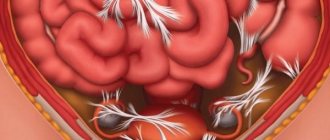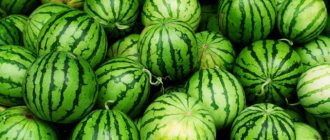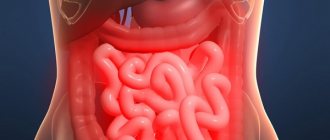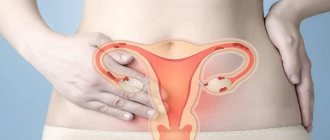Does garlic cause gas?
Normally, the human intestine contains about 200 ml of various gases (hydrogen, oxygen, hydrogen sulfide, methane, nitrogen, ammonia, etc.).
They enter the intestines with food and are produced by bacteria - normal intestinal microflora. Microorganisms are involved in the digestion of foods that are poorly digested under the influence of gastric and intestinal juices.
They participate in the synthesis and absorption of vitamins and other essential substances, and in the process of life they produce various gases.
If the amount of gases does not exceed the norm, then their release often goes unnoticed by others and the person himself. But if gas formation in the intestines increases, then complaints arise about:
- abdominal pain;
- sensation as if there is a twisting sensation in the intestines;
- rumbling;
- diarrhea;
- Frequent passing of gas (sometimes with an unpleasant odor).
Products that increase gas formation
Patients with flatulence should follow a diet. Avoid foods that contain a lot of dietary fiber, which increase gas formation and adversely affect normal microflora. It is necessary to limit consumption:
- sweet varieties of apples;
- bananas;
- grapes;
- legumes;
- cabbage (white cabbage, Brussels sprouts, kohlrabi);
- milk;
- cucumbers;
- pasta made from premium flour;
- canned meat and fish;
- lamb and pork (even low-fat ones, unless you are used to them since childhood);
- liver;
- kidneys;
- brain;
- condensed milk;
- chocolate;
- carbonated drinks;
- ice cream.
Preventing flatulence is not only about limiting certain foods. Most of the gases enter the intestines during meals. To prevent aerophagia, it is recommended not to talk or drink through a straw while eating.
Other factors of increased gas formation
- Increased metabolic activity of normal microflora. Occurs when consuming foods that are poorly digested (especially those rich in fiber).
- Violation of absorption and digestion processes (with pathologies of the gastrointestinal tract), dysbacteriosis. Undigested food debris is broken down by bacteria and eventually produces gas.
- Intolerance to certain foods. Increased gas formation is promoted by foods that do not cause flatulence in other people.
- Swallowing air while eating (aerophagia). Especially a lot of gases enter the gastrointestinal tract if you talk while eating.
- Impaired intestinal motility. Flatulence and bloating occur with intestinal obstruction and constipation associated with decreased peristalsis.
- Malabsorption of substances. Sometimes, excessive gas production occurs due to poor absorption in the intestines. The cause is heart failure and impaired portal circulation.
Increased gas formation in the intestines can be a consequence of disruption of the gastrointestinal tract and poor nutrition.
Individual intolerance
There are foods whose consumption causes increased gas formation in certain people. To identify individual intolerances, you need to keep a food diary. In it, write down the time of food intake, its composition, and whether after some time it caused bloating, pain, or not. Such records will help the doctor determine the cause of increased gas formation.
Most often, the cause of individual intolerance to certain foods is pathologies of the gastrointestinal tract:
- reduced acidity of gastric juice;
- malabsorption (impaired absorption of various nutrients);
- celiac disease.
With low acidity, even milk causes increased gas formation. It does not curdle in the stomach under the influence of hydrochloric acid and is not digested.
With other digestive and absorption disorders, complex carbohydrates and proteins remain undigested. All these leftover food, under the influence of intestinal bacteria, begin to ferment and rot.
As a result of complex chemical reactions (the action of bacterial enzymes), gas is formed and symptoms of flatulence appear.
Combination of products leading to gas formation
In addition to individual intolerance, there are a number of products, the combination of which increases the formation of gases. Therefore, it is advisable to consume some products separately:
- Milk is the most common product and cannot be combined with most dishes. To digest it, you need high acidity of gastric juice. When other food enters the stomach, the acidity decreases and the milk is not digested. And if it is consumed with sour fruits, then the curdling process begins before the food bolus enters the stomach.
- Sugar and starch. With increased acidity, they increase the acidity of gastric juice. Sour belching and dyspeptic disorders occur. With low acidity, starch helps slow down the movement of food into the duodenum, and sugar is quickly broken down. Due to the lack of hydrochloric acid, the fermentative microflora is not neutralized, but intensively promotes the fermentation of sugar, the formation of gas and the proliferation of pathogenic and putrefactive microflora.
- Fatty meats and legumes. These foods themselves are hard on the stomach. Legumes increase gas formation by 3–5 times. And if they are also consumed with pork or lamb, then this process is enhanced tenfold.
Foods that do not cause flatulence
Protein foods are of particular importance. Complete proteins normalize the function of the intestines, liver, pancreas, blood condition and metabolism. The main source of protein is meat and fish. Fatty varieties are strictly prohibited. Recommended:
- chicken;
- lean pork;
- beef;
- veal;
- rabbit;
- turkey;
- kefir, fermented baked milk;
- cottage cheese;
- mild varieties of hard cheese;
- river fish (except red);
- sea fish (cod, hake, sablefish, pollock, saberfish);
- granular caviar.
All dishes made from these products are best steamed or boiled. To get rid of the specific smell of fish, it is boiled with vegetables and roots. Dill seeds are used as spices; they help with flatulence.
It is better to eat soft-boiled eggs, in the form of an omelet. They are contraindicated in their raw form. The protein contains avidin, which inactivates biotin (one of the B vitamins). Raw eggs can also be a source of pathogenic bacteria. The yolk should be omitted. It contains sulfur-containing amino acids; when it breaks down, hydrogen sulfide is released and flatulence increases.
Source: https://shokomania.ru/vyzyvaet-li-chesnok-gazoobrazovanie/
Wheat
And everything that is made from it (bread, pasta, cookies, etc.).
Just like legumes, wheat leads to bloating in two ways.
The first path is similar to the path of legumes. This is the presence of FODMAPs compounds in wheat. The second way is the influence of gluten, which this crop is rich in. In people with gluten intolerance and hypersensitivity, wheat products cause extreme bloating, flatulence, abdominal pain and diarrhea.
However, even for those who do not suffer from gluten intolerance, wheat foods can cause bloating after eating.
Foods that cause flatulence in the intestines in adults: a list of what you can and cannot eat
Normally, the human intestine contains about 200 ml of various gases (hydrogen, oxygen, hydrogen sulfide, methane, nitrogen, ammonia, etc.). They enter the intestines with food and are produced by bacteria - normal intestinal microflora.
Microorganisms are involved in the digestion of foods that are poorly digested under the influence of gastric and intestinal juices.
They participate in the synthesis and absorption of vitamins and other essential substances, and in the process of life they produce various gases.
If the amount of gases does not exceed the norm, then their release often goes unnoticed by others and the person himself. But if gas formation in the intestines increases, then complaints arise about:
- abdominal pain;
- sensation as if there is a twisting sensation in the intestines;
- rumbling;
- diarrhea;
- Frequent passing of gas (sometimes with an unpleasant odor).
First aid for flatulence
To eliminate the symptoms of flatulence caused by the consumption of gas-forming products, there are several simple recipes:
- take 0.5 teaspoon of baking soda, add lemon juice or vinegar to it, stir it in a small amount of water and drink it after meals. The product is not therapeutic;
- chamomile tea soothes the gastrointestinal tract and removes excess gases;
- Peppermint tea also fights carminative symptoms and gives a softening and soothing effect.
The importance of controlling your food intake
If a patient has a tendency towards increased gas formation, he needs to limit the dishes on the menu that cause this to happen. Otherwise, there will always be gas in the stomach.
In addition, such a person may experience the following problems:
- constant nausea;
- vomiting;
- disturbances in the digestion of food in the stomach and duodenum, absorption of amino acids, fats, carbohydrates, minerals and vitamins in the small intestine;
- disturbances in the formation of feces, which manifest themselves in constant diarrhea and constipation;
- anemia as a result of insufficient absorption of beneficial nutrients;
- belching, sometimes with sour and rotten contents, air.
All this can be avoided by normalizing nutrition. By following the correct diet and eating foods allowed for flatulence, you can not only normalize digestion, but also detect hidden disorders of the gastrointestinal tract.
If proper nutrition is neglected, flatulence becomes constant. Pathogenic bacteria regularly act in the intestines, releasing toxins and poisoning the entire body.
What causes flatulence and who is at risk
Digestive disorders and flatulence can occur due to:
- increased fat content of food, which sharply reduces the tone of the stomach;
- a sedentary lifestyle that reduces intestinal tone;
- stress, so-called psychogenic flatulence;
- lactose intolerance;
- development of intestinal obstruction (in the presence of a tumor, consequences of a hernia);
- uncontrolled use of medications (antibiotics);
- entanglement of intestinal loops;
- acute intestinal infections, the presence of parasites;
- defects and deformations of the esophageal walls, causing congestion;
- high or low acidity;
- consequences of surgery in the form of intestinal adhesions after anesthesia;
- weak stomach, microflora disorders;
- dysbiosis in the large intestine;
- chronic gastrointestinal diseases.
There is also the concept of “FODMSP components” in nutrition. This abbreviation was coined by chemists and refers to fermentable oligosaccharides, disaccharides, monosaccharides and polyols.
All those carbohydrates that are difficult for the stomach to digest. During this long process, they contribute to the start of fermentation in the intestines and are the basis for the development of microorganisms.
All this together contributes to the development and intensification of flatulence.
Thus, food products that make the stomach swell in adults, causing flatulence, form the following list by category:
- fructose, glucose, fiber (all fruits, as well as honey, are rich in them). Glucose is an irreplaceable source of energy for the body, an antitoxic agent; its breakdown is always accompanied by the release of gases. To avoid increased gas formation (flatulence) from eating fruits, you need to eat less than 350-400 g per day and not at once;
- lactose (milk sugar);
- fructans (they are found in onions, garlic, wheat);
- polyols (found in sweeteners, in the seeds of some fruits and berries);
- galactans (found in soy and legumes).
Attention should be paid to the consumption of rye (black bread) and bran bread. Large amounts of yeast can cause bloating and flatulence. Lovers of this bread can be offered a replacement in the form of crackers.
Gas formation is triggered by the prolonged presence of protein foods in the intestines, and the smell is provided by the sulfur content in it. Abuse of protein foods, coupled with enzyme deficiency, triggers an intense process of rotting and increased formation of gases, which leads to flatulence.
List of foods that cause flatulence:
| Product group | Examples of foods that cause flatulence |
| Legumes | Soybeans and products made from it, peas of any kind, chickpeas, lentils, green beans |
| Vegetables | All types of cabbage - white cabbage, cauliflower, broccoli and others (regardless of the method of preparation), garlic, leeks and shallots, potatoes (due to the presence of starch), beets, rutabaga, tops, turnips, radishes, radishes, daikon, cucumbers, asparagus, artichokes |
| Mushrooms | All types |
| Yeast | Any products containing yeast (creating fermentation in the intestines) - from dough to kefir |
| Nuts | Pistachios, cashews |
| Dried fruits | Dried apricots, raisins, figs, prunes, dates |
| Fruits, berries | Watermelon, apples, pears, plums, persimmons, apricots, nectarines, blackberries, cherries, peaches, as well as exotic fruits - papaya, mango, guava |
| Beverages | Alcoholic drinks, beer, kefir, kumiss, kvass, yoghurts, fermented baked milk, carbonated drinks, coffee, chicory, jelly (due to the presence of starch), drinks containing milk or cream |
| Eggs | Fried or hard-boiled |
| Cereals or pasta | Rye, wheat, barley, pearl barley, semolina, bulugur. Baking based on them |
| Semi-finished products (even homemade) | Pies, manti, dumplings, dumplings, as well as canned food, smoked meats, pickles, marinades |
| Seasonings and spices | Ketchup, mayonnaise |
| Meat | All fatty and stringy varieties |
| Sweets | Honey, molasses, marmalade, jelly, jam, sugar and sugar substitutes |
on this topic:
How to eliminate pain and symptoms?
If your stomach starts to hurt after eating onions, you need to take the following steps:
- Drink 2-3 glasses of water in small sips.
- Take Riabal in the recommended dosage for age.
- Lie down for a bit.
After the intensity of the pain decreases, you should immediately consult a doctor to identify the cause of this condition. If the pain is too severe, you should immediately call an ambulance, because some gastrointestinal diseases may be asymptomatic, and severe pain after consuming onions may indicate serious disorders that cannot be relieved at home.
Important! When introducing fresh root vegetables from bulbous crops into your diet, do it gradually, starting with 10 g of the product. If the body reacts normally, increase the portion by 5–10 g daily.
In the presence of gastrointestinal diseases, consumption of raw onions can cause unpleasant painful sensations and provoke their exacerbation. If you experience bloating, nausea, or cutting pain, you should immediately exclude such food from your menu and seek qualified help from a doctor.











